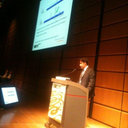Gonadotropin secreting pituitary adenoma associated with erythrocytosis: case report and literature review.
Słowa kluczowe
Abstrakcyjny
BACKGROUND
Most pituitary adenomas with FSH- or LH-positive immunohistochemistry are endocrinologically silent, and neurological symptoms due to their large volume are the first clinical signs; they are rarely reported to be secreting gonadotropins, this usually occurring in cases with clinical endocrine findings. Gonadotropinomas are often treated surgically because they are unresponsive to conventional medical therapies. Temozolomide was recently recommended for non-responder aggressive pituitary adenoma management.
METHODS
A 43-year-old male with a history of 5 years of erythrocytosis presented with severe headache, orthostatic dizziness, and difficulty walking. MRI documented a giant pituitary adenoma and high uptake of 111In-pentetreotide indicated somatostatin receptor (SSR) expression. Biochemical tests revealed a secreting gonadotropinoma. Therapy with somatostatin analogs and dopamine agonists improved the patient's headache, achieved partial hormone control, slightly reduced the size of the adenoma, and controlled erythrocytosis. Six months after the diagnosis, hormone escape occurred despite therapy, thus neurosurgery was performed. After the procedure the patient died of untreatable intracranial hypertension. The surgical specimen revealed SSR 2 and 3 expression, and temozolomide did not induce apoptosis in primary cell culture.
METHODS
Among gonadotropinomas, female gender (77%), macroadenoma (84%), young age at diagnosis (28 ± 12 years), delay from first symptoms to diagnosis (up to 15 years), and ovarian cysts/menstrual disorders in females or macro-orchidism in males were the foremost clinical and neuroimaging features.
CONCLUSIONS
Male gonadotropin-secreting pituitary adenomas may have a variable clinical expression secondary to testosterone excess. Somatostatin analogs, dopamine agonists or temozolomide may have a role that needs to be assessed case by case.




